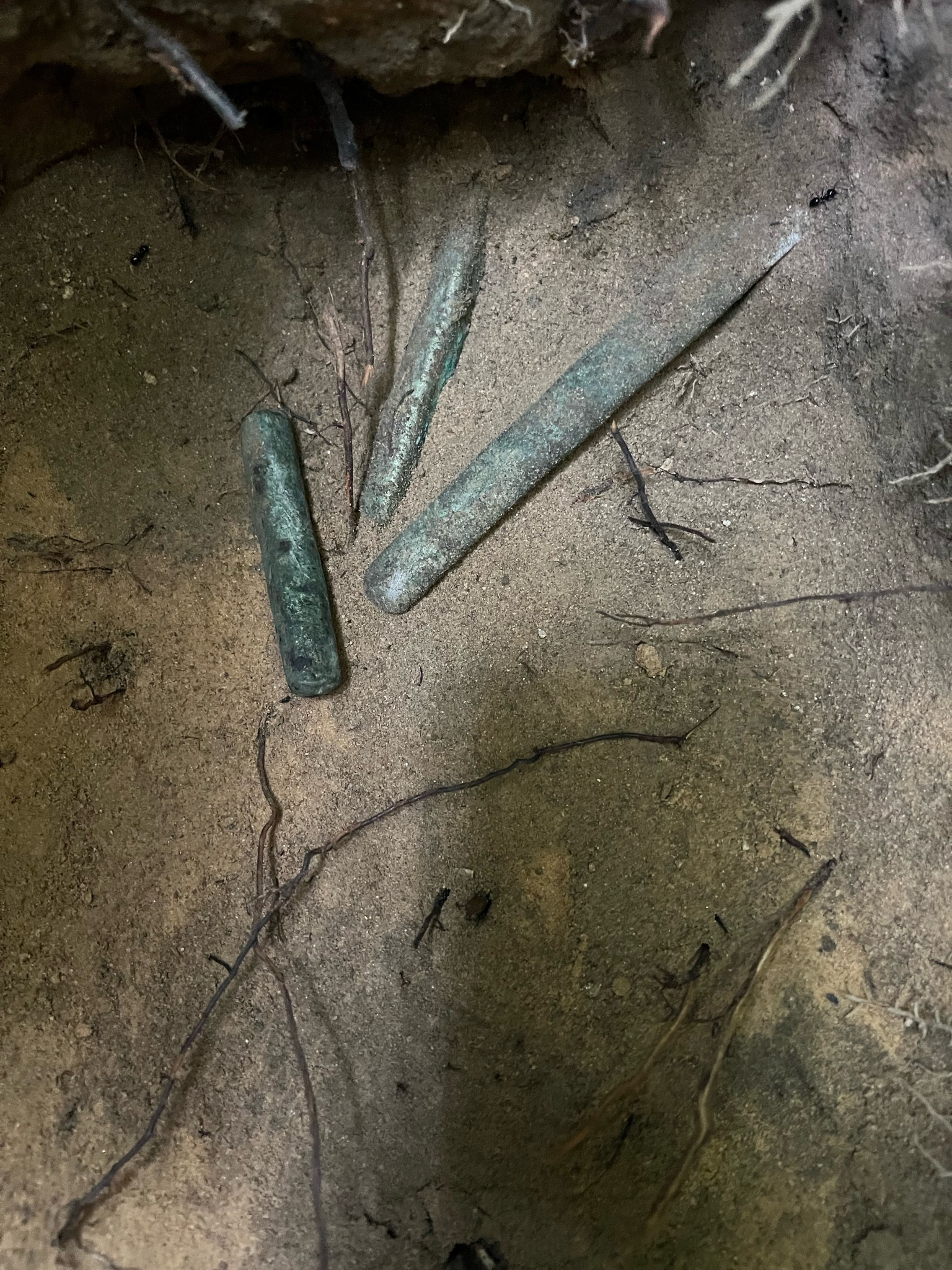Když vidím tu měděnku, tak mi to stříbro tak kvalitní nepřipadá.
A rare treasure trove of medieval hrivens - long bars of high quality silver - was found in Lithuania
Categories: Nálezy nejenom s detektorem v západní Evropě
A treasure trove of massive Lithuanian silver coins from the 13th to 14th centuries was discovered during the exploration of the defunct 19th-century Kriveikiskis estate near the village of Kernavė, about 30 km from Vilnius. There were a total of 4 long bars in the excavation, which must have represented quite a considerable fortune in their time.
The Lithuanian hryvnia was a long semicircular solid silver bar that was used as payment. They were widespread among the Baltic tribes and states from the 11th century until the first coins began to be minted in the late 14th century. Prior to that, barter trade was mainly used in the area, with furs most often used as 'payment'.
According to Andrius Janonis, the head of the Museum of Archaeological Sites in Kernavė, the value of these rods at that time could have been interesting: "There are different estimates of the value and there is no unanimous opinion on how much they might have been worth. The value was quite high, a single hryvnia could buy several sheep or cows, which was a huge asset at the time," he told BNS.
Some studies say that one massive shekel could buy 14 sheep, or a good quality horse for one and a half hryvnia. Roughly converted "per horse", one silver bar could be equivalent to about 1 500 - 2 500 euros today (between 36 000 - 50 000 CZK). This is also why hryvnia were very often cut into smaller pieces, usually in half, but very small pieces are also not infrequently found.
The landscape around Kernavė has been inhabited since the Stone Age. In the Middle Ages, the settlement was an important centre with considerable influence on the region. From the beginning of the 13th to the end of the 14th century it was even the capital of the Grand Duchy of Lithuania. Archaeologically, the area is therefore a very interesting and extremely valuable historical cultural site. The Lithuanian State Cultural Reserve was established in Kernavė as early as 1989 and in 2004 the archaeological site was included in the UNESCO World Heritage List.
So far, five complete mounds and many of their fragments have been found in the territory of the village. However, archaeologists welcome every new discovery, especially in such an unexpected place and in such a degree of preservation. After preservation and chemical analysis, the rods will be exhibited at the Kernavė Archaeological Museum.
Older video from the museum and the surroundings of Kernavė
Roman Nemec
Sources: lrt.lt, sacbee.com, bnn.network

in Kernavė

Kernavė Castle

A survey of the 19th century manor.

detail of the silver nuggets in situ

2 complete and two halves of Lithuanian talents

detail
The article is included in categories:






